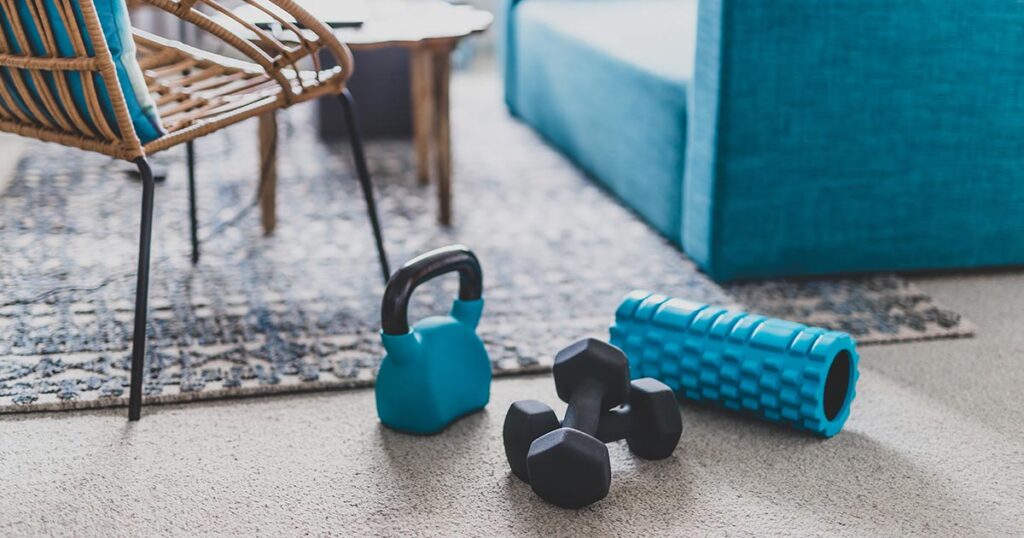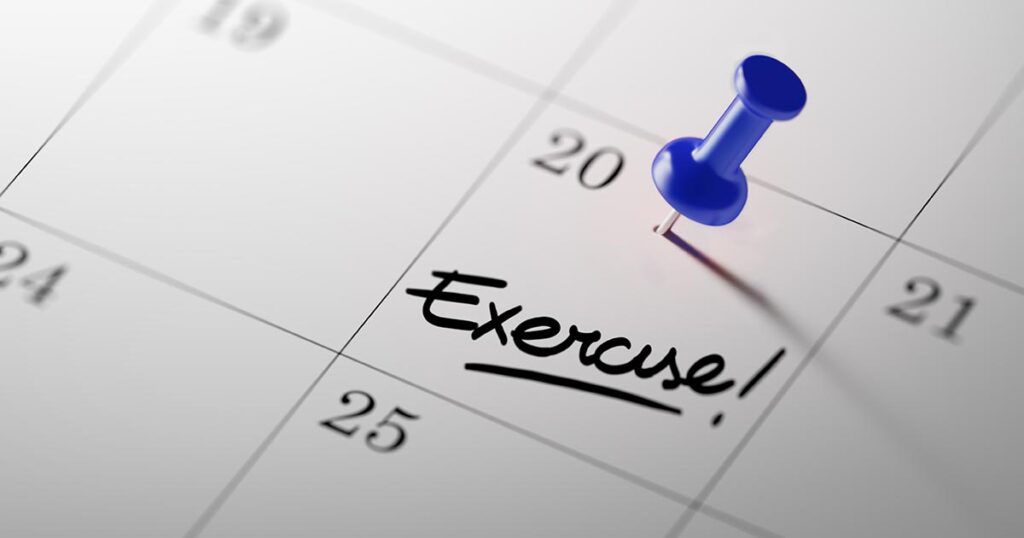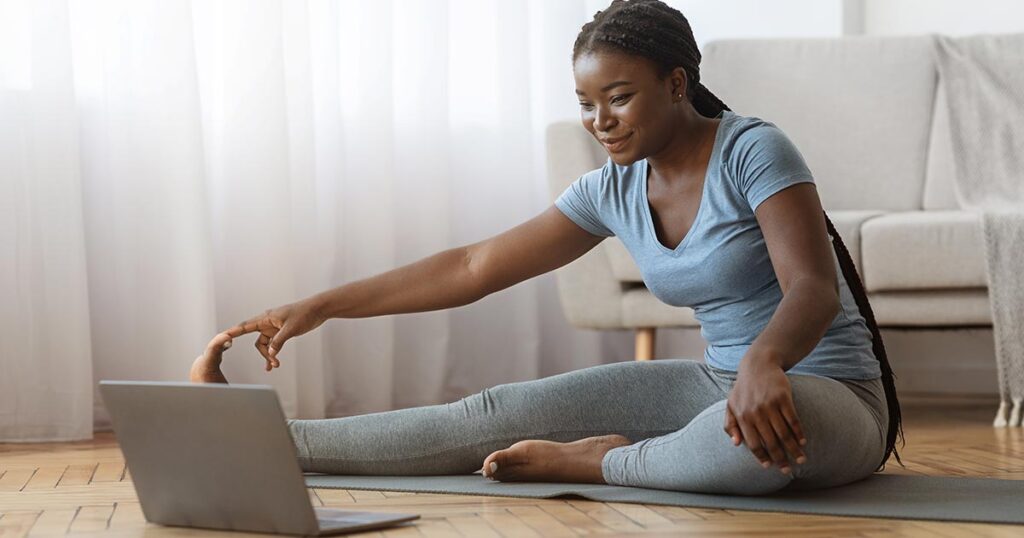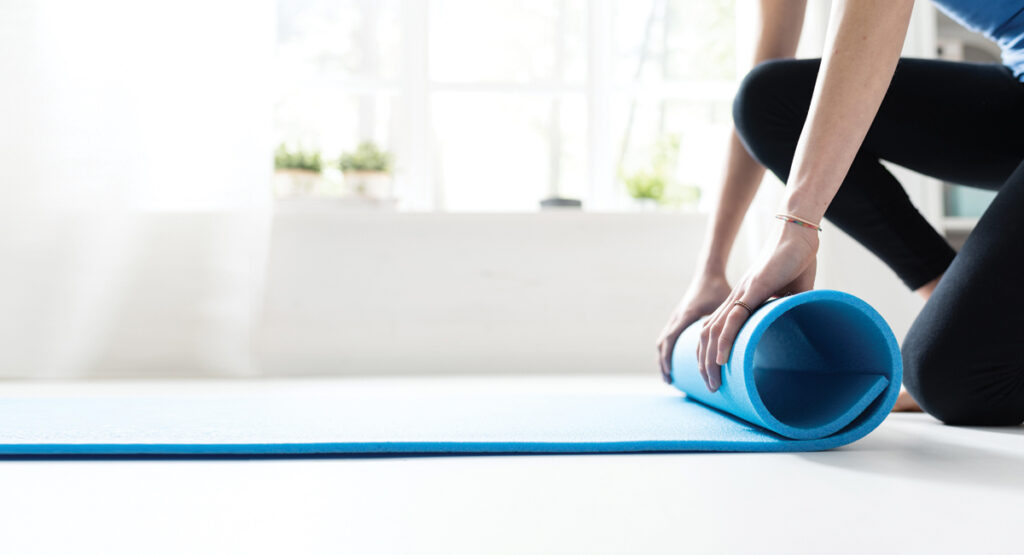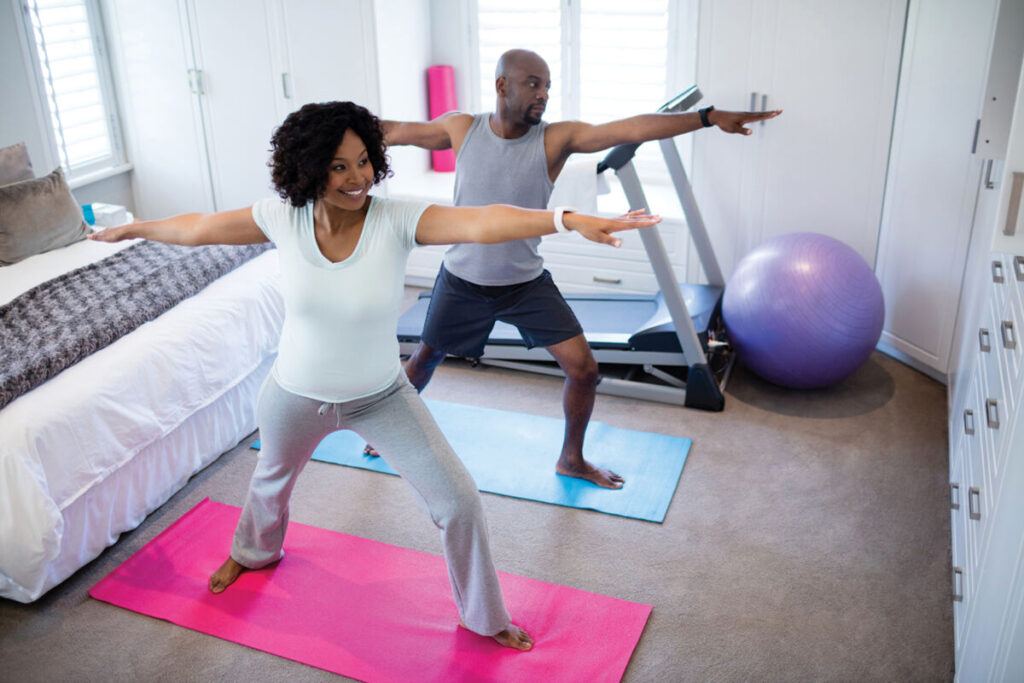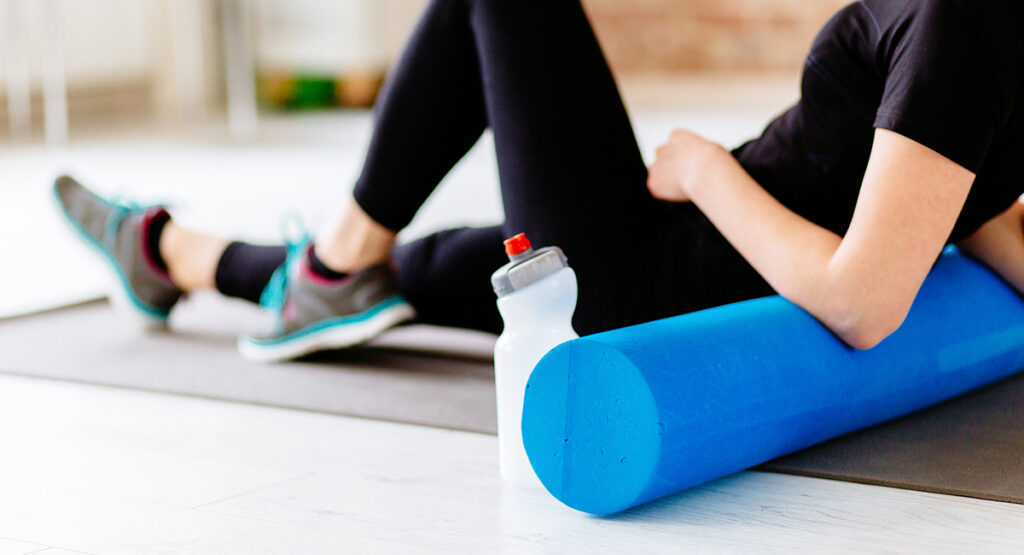Sometimes, trying to workout out at home is hard, especially when you’re surrounded by comfortable couches, your cozy bed, and a TV tempting you with all your favourite shows. But with many people not feeling safe to head to the gym, or unable to go due to local health restrictions, your home can be a great alternative to get fit. We’ve compiled some tips to help you get motivated and transform your home into your personal fitness space.
1.) Designate A Space
Don’t let the size of your available space fool you! You’d be surprised at how good of a workout you can achieve, even with the smallest of spaces. Your bedroom, your living room, or even a hallway can be enough for a good old sweat session. If you are wanting to use another room to exercise in, move furniture around to make space. The key is making sure that you have a designated spot for all of your fitness equipment. This can be under the couch, or even in a corner of the room. You can even get yourself some storage crates, a decorative trunk, or furniture that doubles as storage your for weights, resistance bands, foam rollers, yoga mat, kettle bells, or other fitness accessories you may have. This is a great way to ensure your fitness gear is easily accessible for you, any time you want to work out. If your place is just too small for storing any fitness equipment, it’s time to get creative. Soup cans make great substitutes for dumbells, a laundry detergent jug can be used as a kettle bell, and you can use a sturdy chair, coffee table or even the edge of your couch to do dips.
TIP: If you can, plan your workout space near a window, so that you can open it for fresh air if you get too hot or the room starts to feel stuffy. You can also consider using an air purifier.
2.) Plan Ahead
After you’ve created a designated space for you to workout in, plan your workout schedule ahead of time. This can be marking it on your calendar, setting reminders in your phone, or even getting a white board for your kitchen and plotting it out on there. Whether you’re starting off with 2 days a week or want to work out 5 days a week, having a calendar to plan ahead will help you stay consistent, have goals to work towards, and make fitness a priority. It can also help you keep track of what kinds of workouts your are doing and when to switch it up. Plus, nothing is more satisfying than crossing off your completed workout in your calendar!
TIP: If possible, work out first thing in the morning, so that it is over and done with, before your other daily responsibilities get in the way. If finding a solid time slot is tricky, you can always break it up into smaller chunks. Two 15-minute workouts or even three 10-minute workouts can be just as effective as one 30-minute exercise routine!
3.) Get into the Zone
Get pumped and in the mood by creating a playlist of all your favourite songs to listen to as you workout. Portable bluetooth speakers are a great piece of equipment to use, as they can be taken anywhere. Changing into workout clothes is also a way to help you get into the fitness mindset. As well, remove all potential distractions. Turn off your TV, put your phone on silent, and let people living with you know you are about to begin your exercise routine – or better yet, ask them to work out with you! You can even FaceTime or Zoom with friends and family for a virtual workout session. Sometimes, having a friend or family member to do it together with can be the push you need to get started.
TIP: If none of these things help you to get into the zone, turn on your TV and use the commercials to squeeze in a workout. Try doing as many dumbbell reps, squats, burpees, etc. as you can until the commercial break ends. Then try to beat your record at the next one.
We hope you’ve found these tips helpful. If you find that you enjoy working out at home, and want to look at incorporating it long-term into your lifestyle, you can also look at investing in exercise equipment like an exercise bike. If you enjoy the outdoors, read this blog on taking your workout outside in chillier weather. Not going to the gym doesn’t mean you have to stop your fitness routine. With some motivation, planning, and a little creativity, you can ensure you never miss a workout!

